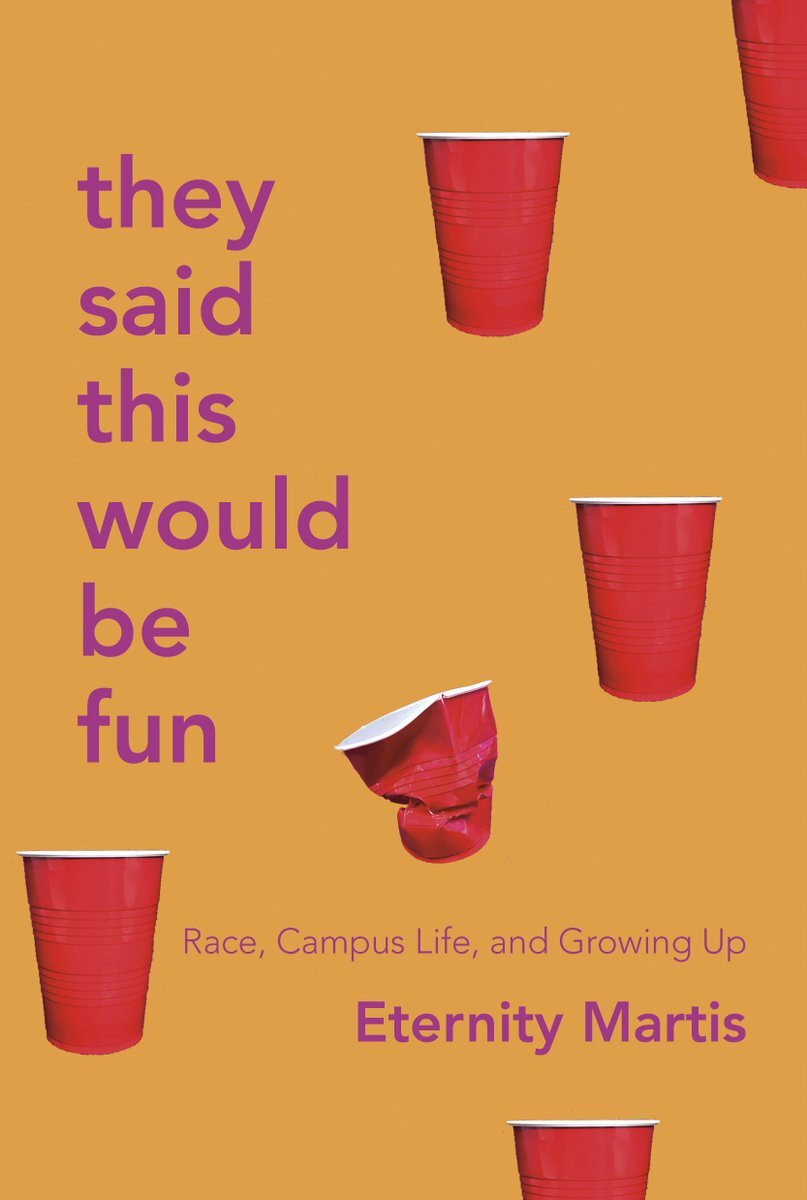London Calling: Shazlin Rahman Reviews Eternity Martis's They Said This Would Be Fun
What Matters Now
What do you know about London, Ontario? If you Google the city, you’ll find rote descriptions of its medical research community and student population. The University of Western Ontario, whose reputation as a party school lives on, looms large as an institution of the city.
Eternity Martis. They Said This Would Be Fun: Race, Campus Life, and Growing Up. McClelland and Stewart. $25.00 256 pp., ISBN 9780771062186
London is very familiar to Eternity Martis. Between 2010 and 2014, Martis was an undergraduate student at UWO, and one of a handful of Black students on campus. Although she had been contending with the many dimensions of her bi-racial identity, her years at UWO and in the city of London fundamentally shaped her understanding of what it means to live, breathe, and move in the body of a Black woman in a predominantly white world.
Martis attracted national attention in 2015 when she wrote an article for Vice Canada in which she lambasted London and its residents for the way they treated racialized communities. The article was a scathing account of the racism and white supremacy that undergirded the city’s seemingly calm, friendly exterior. While Martis has written about racism before (see: “I was a Racist, Misogynistic Mall Santa’s Bitch”), the article, provocatively titled “London, Ontario was a racist asshole to me,” drew critical attention for putting an entire city in the crosshairs.
The article generated unsurprising denials from residents, and silence from politicians (apart from London’s few Black city councillors). At the same time, Martis watched her inbox turning into “a virtual confessional booth.” She received kind messages from those who shared her experience, as well as those who felt complicit in allowing such bigotry to become a normal part of the city’s culture.
Today, almost exactly five years after the article appeared, Martis’s deeply personal and traumatic account of her time at Western has been published as a book, making it part of the growing literary canon on race critique. In both the article and the book, Martis discusses in great detail the numerous incidents of casual racism and violence directed at her as one of the few Black students on campus. The trauma resulting from those incidents only deepened when she saw how the university and the city of London were ill-equipped and slow to act when she brought her complaints to them.
As someone who once was also one of the few racialized students on campus in a small, predominantly white town in southwest Ontario, I identified with Martis’s story. I didn’t have the language when I was on campus, but the genre of memoir writing that connects the personal with the political through the specific lens of race has been critical in helping me articulate and understand my experiences. State-side, Ta-Nehisi Coates’s Between the World and Me, Margo Jefferson’s Negroland, and Alex Wagner’s Futureface crystalized the connection between trans-Atlantic slavery, subsequent waves of migration to the global north, and current immigration policies that result in what is now America’s melting pot.
Closer to home, there is Kamal Al-Solaylee’s Intolerable, Wab Kinew’s The Reason You Walk, Jesse Thistle’s From the Ashes, Alicia Elliot’s A Mind Spread Out on the Ground, and Rinaldo Walcott and Idil Abdillahi’s BlackLife. Martis’s They Said This Would Be Fun contributes to this canon specific insights about a bi-racial woman struggling to find her Black identity. To that end, Martis makes powerful connections between the personal and political while situating her perspective firmly within the context of anti-Black racism in Canada.
Through detailed accounts going all the way back to her childhood, Martis paints a complex picture of the confusion and isolation she experienced as a child of a South Asian mother and a Black father. Having one foot in both worlds meant that she never fully belonged in either. Her mother’s side of the family – who was South Asian and played a big role in her upbringing – couldn’t understand why Martis wanted to identify with the Black part of her identity. “I know they wanted to understand what I was going through,” Martis writes. “But anti-Black racism, this unfamiliar type of injustice, was hard for them to comprehend, especially when they didn’t see me as a Black woman.”
For readers looking for little more than peeking into Martis’s traumatic experiences and scratching a voyeuristic itch, be warned: the author is persistent in reminding us that her experiences are not solely personal. Every chapter is punctuated by news reports, statistics, and historical data showing that her experiences are symptomatic of broader patterns of white supremacy and, more specifically, anti-Black racism that is prevalent among Canadians. For instance, Martis reminds us that plans for segregated schools were in the works in the 1860s and were only abandoned due to lack of funds. Accounts by freed slaves who settled in London around that time testified to a particular brand of “mean prejudice” they hadn’t experienced under slavery in America.
There is room for Martis to grow as a writer. For example, in discussing her experience of being assaulted, she jumps too suddenly from her own experience to broader statistics showing how few assault cases reported by women end up being adequately resolved. As a reader, I felt left behind in the personal anecdote while Martis had already moved on to the political significance of her experience. At times, her analyses are overbroad, including how data on police violence towards Black people in the US are applied to the Canadian context without comment.
Nevertheless, I enjoyed seeing Martis flex her literary muscles and take the risk of incorporating humour in her writing. Humour is one of her strong suits, and I hope we’ll see more of it from her in the future. For example, in the chapter “Anthony, my Italian Greek tragedy,” her doomed romance with a love interest is presented in the form of a Greek tragedy, making for a fantastically playful demonstration of “show, don’t tell” in your writing. Similarly, The Necessary Survival Guide for Token Students, which acts as a transition between chapters, provides brief and much-needed moments of levity.
For a Canada that is so fond of claiming the moral high ground by comparing itself to its neighbours down south, such a frank, truth-telling book like this one is essential. As Martis points out in both her book and her preceding articles about the same topic, data on the experiences of Black and other marginalized communities in Canada is still scarce and poorly recorded. The institutional will to change this is still woefully missing. For anyone professing to be a proponent of justice, particularly in Canada, this book is a must-read.
Shazlin Rahman is a nonprofit communications specialist, writer and artist whose work focuses on expanding the representation of women of colour.


